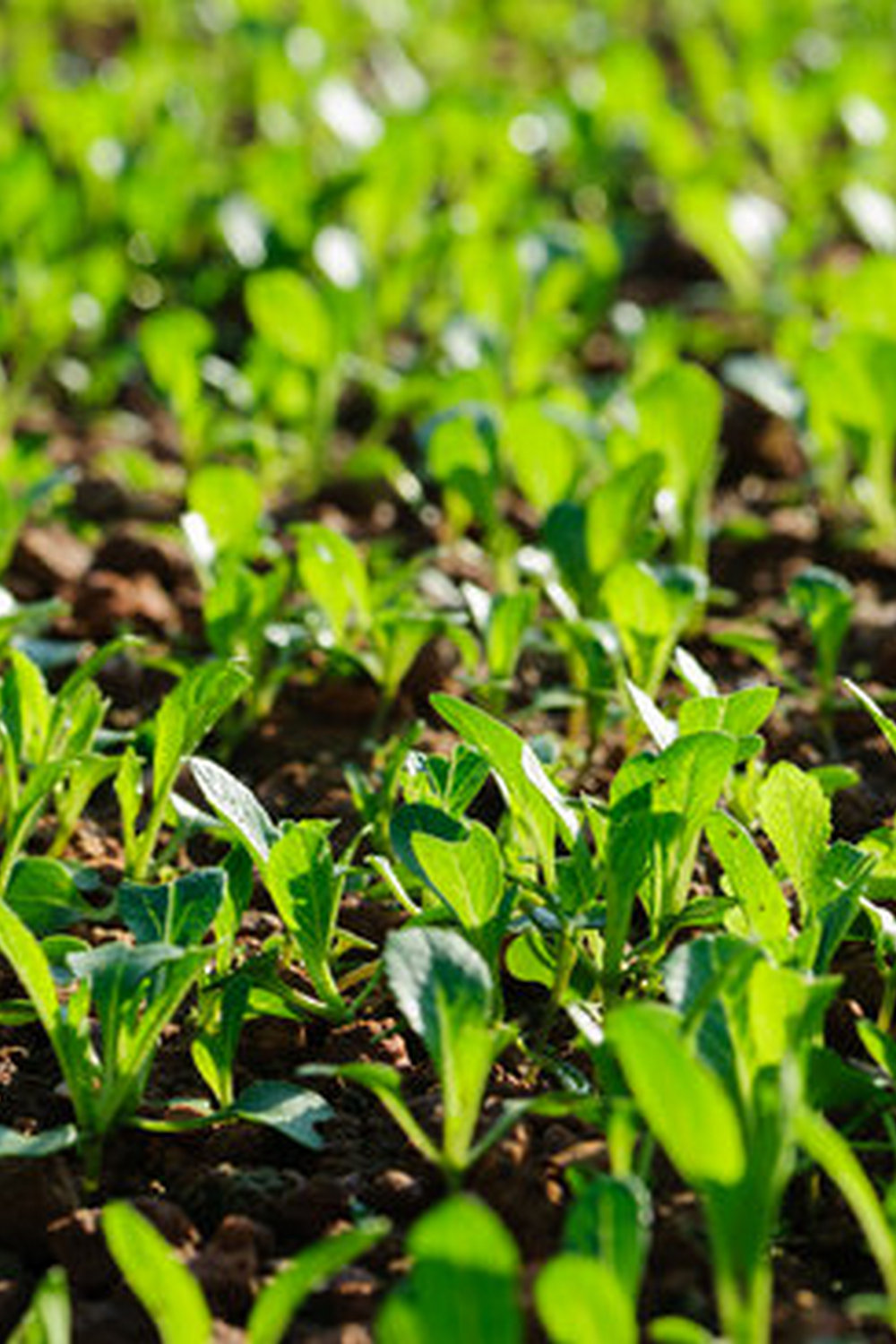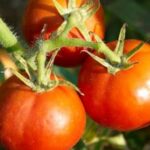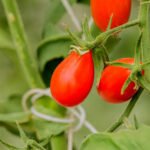Spring flowers are not only a beautiful addition to any garden but also play a crucial role in improving the overall health and yield of vegetable gardens. By attracting pollinators such as bees, butterflies, and hummingbirds, these flowers help ensure that vegetables are properly pollinated, leading to larger harvests. In this article, we will explore the various benefits of incorporating spring flowers into vegetable gardens and how they can enhance the gardening experience.
Pollinators are essential for the reproduction of many vegetable plants, as they transfer pollen from one flower to another, allowing fruits and vegetables to develop. Without these pollinators, many crops would struggle to produce the fruits that we enjoy. By planting spring flowers that attract these beneficial insects and birds, gardeners can significantly increase their chances of a successful harvest. This interdependence between flowers and vegetables illustrates the symbiotic relationship in nature that can be harnessed for optimal garden yields.
Not only do spring flowers attract pollinators to vegetable gardens, but they can also help deter pests that may damage valuable crops. Certain flowers emit strong scents or natural chemicals that repel harmful insects, acting as a natural form of pest control.
Additionally, by practicing companion planting – strategically placing compatible plants together based on their ability to benefit each other – gardeners can create a balanced ecosystem within their vegetable gardens. These ecological principles not only promote a healthier garden but also contribute to sustainable gardening practices that benefit both humans and the environment.
Understanding the Role of Pollinators in Vegetable Gardens
Pollinators play a crucial role in vegetable gardens by aiding in the reproduction of plants. Without pollinators like bees, butterflies, and birds, many vegetables would not be able to produce fruit. When planning a vegetable garden, it is important to consider the needs of these pollinators to ensure a healthy and bountiful harvest. One way to attract more pollinators to your garden is by planting spring flowers that they are naturally drawn to.
Some spring flowers that are particularly attractive to pollinators include bee balm, lavender, and sunflowers. These flowers not only add beauty and color to your garden but also serve as a food source for bees and butterflies. By incorporating these flowers into your vegetable garden, you can create a more balanced ecosystem that supports the pollinators necessary for successful fruit production.
In addition to attracting pollinators, planting spring flowers in your vegetable garden can also help improve overall soil health. Flowers like marigolds and nasturtiums have natural pest-repelling properties that can deter harmful insects from damaging your vegetables. This natural form of pest control reduces the need for chemical pesticides, creating a healthier environment for both plants and pollinators alike.
| Spring Flowers Good for Vegetable Gardens | Benefits |
|---|---|
| Bee Balm | Attracts bees and butterflies; adds beauty to the garden |
| Lavender | Fragrant flowers that attract pollinators; natural pest repellent |
| Sunflowers | Large blooms attract bees; adds height and color variation |
Top Spring Flowers That Attract Pollinators to Improve Vegetable Garden Yield
Spring flowers not only add beauty and color to your vegetable garden but can also play a crucial role in attracting pollinators. This is especially beneficial for vegetable gardens as pollinators like bees, butterflies, and hummingbirds help ensure a bountiful yield by aiding in the fertilization process. By planting certain spring flowers strategically throughout your garden, you can create a welcoming environment for these helpful creatures.
Some of the top spring flowers that are known to attract pollinators include Lavender, Sunflowers, Cosmos, Zinnias, and Bee Balm. These flowers not only provide nectar for pollinators but also serve as visual cues to guide them towards your vegetable plants. For example, planting Sunflowers on the borders of your garden can act as a beacon for bees and butterflies, encouraging them to visit and pollinate your vegetables.
Incorporating these spring flowers in your vegetable garden not only enhances its aesthetic appeal but also boosts the overall yield of your crops. By promoting pollination through the presence of attractive flowers, you are creating a symbiotic relationship that benefits both the flowers and the vegetables. So next time you plan your garden layout, consider including these pollinator-attracting spring flowers to improve your vegetable garden yield.
| Spring Flowers | Pollinators Attracted |
|---|---|
| Lavender | Bees and butterflies |
| Sunflowers | Bees and birds |
| Cosmos | Butterflies and hummingbirds |
| Zinnias | Butterflies and bees |
| Bee Balm | Hummingbirds and bees |
Importance of Companion Planting in Vegetable Gardens
Companion planting involves strategically placing different plants together in the garden to maximize their benefits. When it comes to vegetable gardens, companion planting is not only about improving the growth and yield of vegetables but also about creating a balanced ecosystem that supports beneficial insects like pollinators. This practice can be especially beneficial when incorporating spring flowers into your vegetable garden.
Certain spring flowers are known for attracting pollinators such as bees, butterflies, and birds, which play a crucial role in the pollination process of many vegetables. For example, planting vibrant cosmos or delicate lavender alongside your tomatoes or squash can help increase fruit production by ensuring successful pollination. Additionally, marigolds are not only beautiful additions to the garden but also act as natural pest repellents, protecting your vegetables from harmful insects.
Incorporating companion plants like spring flowers in your vegetable garden can also help improve soil health and nutrient uptake for your crops. Some flowers have deep root systems that can break up compacted soil, allowing better water infiltration and root growth for neighboring vegetables.
Others release compounds that deter pests or attract beneficial insects that prey on garden pests, creating a natural pest control system within your garden. By considering the compatibility and benefits of different plant pairings, you can create a harmonious and productive environment for both flowers and vegetables to thrive harmoniously.
How Planting Spring Flowers Can Deter Pests From Damaging Vegetables
Planting spring flowers in vegetable gardens not only adds beauty and color to your outdoor space but also serves as a natural way to deter pests from damaging your precious vegetables. By strategically selecting certain types of spring flowers, you can create a pest-resistant environment that promotes healthy growth for your veggies. Here are some top spring flowers that can help keep pests at bay in your vegetable garden:
- Marigolds: These vibrant flowers not only add a pop of color but also emit a scent that repels pests like aphids, nematodes, and tomato hornworms.
- Lavender: Known for its calming fragrance, lavender is also effective in deterring mosquitoes, fleas, and moths that may harm your vegetable plants.
- Nasturtiums: Bright and easy-to-grow nasturtiums attract aphids away from your vegetables, acting as sacrificial plants while also serving as a trap crop for caterpillars.
In addition to these specific flowers, planting a variety of herbs such as mint, basil, and cilantro can also help fend off pests due to their strong aromas that mask the scent of your vegetables. This natural method of pest control not only reduces the need for harmful chemicals but also promotes a more balanced and sustainable ecosystem in your garden.
By incorporating these pest-deterring spring flowers into your vegetable garden design, you can create a harmonious balance between beauty and function. Not only will you enjoy the colorful blooms and fragrances of these flowers, but you’ll also reap the benefits of having fewer pests attacking your valuable crops. So next time you’re planning your vegetable garden layout, consider adding some of these spring flowers to help protect and nurture your plants throughout the growing season.
Tips on How to Design a Colorful and Functional Vegetable Garden With Spring Flowers
When it comes to designing a vegetable garden with spring flowers, there are several key tips to keep in mind to create a colorful and functional space. One important aspect to consider is the layout of the garden. Incorporating raised beds or containers can not only add visual interest but also help with organization and maintenance. By grouping vegetables and flowers with similar sunlight and watering needs together, you can ensure that each plant thrives.
Choosing the Right Spring Flowers
Selecting the right spring flowers for your vegetable garden is crucial for attracting pollinators and adding beauty to your space. Some popular options include marigolds, nasturtiums, and calendula, which not only attract bees and butterflies but also have natural pest-repelling qualities. These flowers can be strategically planted throughout the garden to create a harmonious balance between aesthetics and functionality.
Adding Vertical Elements
Incorporating vertical elements such as trellises or arbors not only maximizes space in a vegetable garden but also allows for more opportunities to showcase spring flowers. Climbing varieties like morning glories or sweet peas can provide a stunning backdrop while attracting beneficial insects. Additionally, vertical structures can create visual interest and delineate different areas within the garden for a cohesive design.
Maintaining Harmony
To maintain harmony in your vegetable garden with spring flowers, it’s essential to regularly tend to both aspects of your garden. This includes proper watering, mulching, weeding, and deadheading flowers to promote continuous blooming. By staying on top of maintenance tasks, you can ensure that your garden remains vibrant and productive throughout the growing season.
Best Practices for Maintaining Spring Flowers in Vegetable Gardens
Spring flowers are not only beautiful additions to vegetable gardens, but they also serve a crucial role in attracting pollinators that can help improve the yield of your crops. To ensure that your spring flowers thrive and continue to benefit your vegetable garden, it is essential to follow best practices for their maintenance. Here are some tips to keep your spring flowers looking their best:
- Regular watering: Spring flowers, like all plants, need adequate water to flourish. Be sure to water them consistently, especially during dry periods, to prevent wilting and promote healthy growth.
- Deadheading: Removing spent blooms from your spring flowers can encourage new growth and prolong the blooming period. This practice also helps redirect the plant’s energy towards producing more flowers.
- Fertilizing: Providing a balanced fertilizer specifically formulated for flowering plants can help nourish your spring flowers and support their overall health. Be mindful not to over-fertilize, as this can lead to excessive foliage growth at the expense of flower production.
In addition to these general maintenance practices, it is important to pay attention to specific needs of different types of spring flowers. Some varieties may require additional care or have unique preferences in terms of sunlight exposure, soil type, or pruning techniques. By staying informed about the specific requirements of each type of flower in your vegetable garden, you can maximize their benefits and create a vibrant and thriving outdoor space.
Lastly, regular monitoring for signs of pests or diseases is crucial for maintaining the health of both your spring flowers and vegetable crops. Early detection and prompt intervention can help prevent issues from spreading and causing significant damage. By incorporating proper maintenance practices into your gardening routine, you can enjoy the beauty of spring flowers while reaping the rewards of a bountiful vegetable harvest.
DIY Projects
Spring flowers not only add beauty and color to vegetable gardens but can also serve a practical purpose in attracting pollinators and deterring pests. One creative way to enhance the aesthetics of your garden while providing necessary information about your plants is by creating natural and eco-friendly plant markers. These markers not only help identify your spring flowers but can also contribute to the overall sustainability of your garden.
Materials Needed
To create natural and eco-friendly plant markers for your spring flowers, you will need items such as wooden popsicle sticks, small stones, recycled wine corks, or even cut-up pieces of bamboo. These materials are not only environmentally friendly but can also blend well with the natural elements of your garden. Additionally, you can use non-toxic paint or permanent markers for labeling each plant marker.
Decorative Touches
To add a personal touch to your plant markers, consider decorating them with colorful designs or patterns that reflect the beauty of your spring flowers. You can also incorporate small drawings or images of the specific flower next to its name on the marker. This not only serves a functional purpose but also adds a whimsical and artistic element to your garden.
Placement and Maintenance
Once you have created your natural and eco-friendly plant markers, be sure to place them strategically throughout your vegetable garden where they are easily visible. Regularly check the markers for any fading or weathering due to outdoor conditions, and touch up the labels as needed. By maintaining these plant markers, you not only keep track of your spring flowers but also continue to promote sustainability in your gardening practices.
Conclusion
In conclusion, planting spring flowers in vegetable gardens proves to be a beneficial practice that not only enhances the aesthetics of the garden but also significantly improves its functionality. By attracting pollinators such as bees and butterflies, these flowers play a crucial role in increasing vegetable yield through natural pollination. The presence of spring flowers like marigolds, lavender, and sunflowers adds not only beauty but also serves as a beacon for these essential garden helpers.
Companion planting with spring flowers in vegetable gardens is another effective way to boost gardening success. Certain flowers act as natural repellents for pests, helping protect vegetables from damage without the use of harmful chemicals. This symbiotic relationship between flowers and vegetables creates a balanced ecosystem within the garden, promoting healthier growth and higher yields.
As we have explored various ways in which spring flowers can benefit vegetable gardens, it is evident that incorporating them into your garden design is a wise choice for any gardener. Whether you are a seasoned pro or just starting out, adding colorful blooms to your vegetable plot not only attracts pollinators and deters pests but also brings joy and tranquility to your outdoor space.
So why wait? Start planning your own vibrant and productive vegetable garden today by including some spring flowers good for vegetable gardens.
Frequently Asked Questions
What Flowers Should I Put in My Vegetable Garden?
Flowers can be a beautiful addition to a vegetable garden, attracting beneficial insects and adding visual interest. Marigolds are a popular choice due to their strong scent that repels pests like aphids. Nasturtiums not only discourage pests but are also edible, adding an extra layer of functionality to your garden.
What Flowers Keep Pests Away From Vegetables?
Certain flowers can help keep pests away from vegetables in your garden naturally. For example, planting chrysanthemums can deter ants, roaches, Japanese beetles, ticks, silverfish, lice, fleas, bedbugs, and spider mites due to the presence of pyrethrum. Lavender is another option that repels flies, mosquitoes, and fleas while attracting beneficial pollinators.
What Are the Best Pollinator Flowers for Vegetable Gardens?
When selecting pollinator flowers for your vegetable garden, consider plants that attract bees, butterflies, and other helpful insects. Some excellent choices include bee balm (Monarda), coneflowers (Echinacea), salvia (Salvia nemorosa), sunflowers (Helianthus), and zinnias. These flowers provide nectar and pollen for pollinators while adding color and beauty to your garden space.

If you’re looking to get into vegetable gardening, or are just looking for some tips on how to make your current garden better, then you’ve come to the right place! My name is Ethel and I have been gardening for years. In this blog, I’m going to share with you some of my best tips on how to create a successful vegetable garden.





